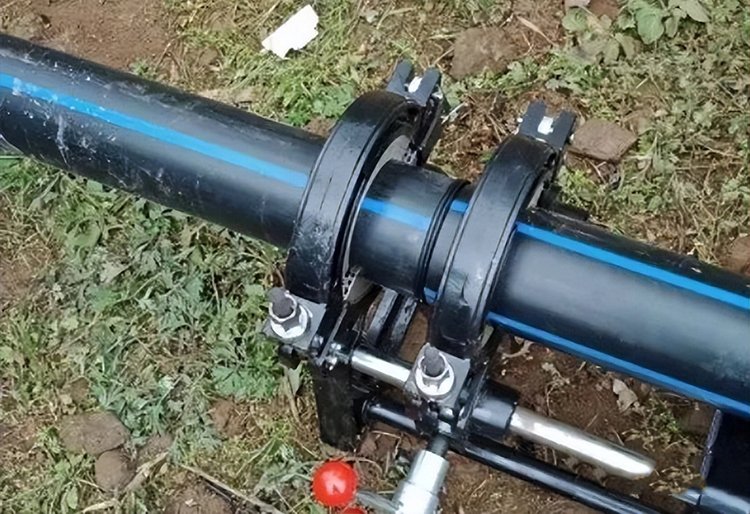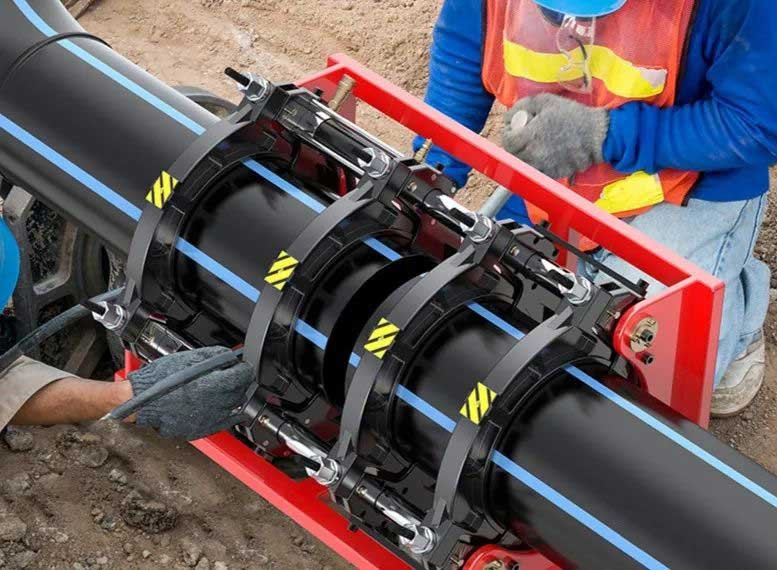PE pipes are primarily used for rural drinking water supply, urban and rural drinking water pipelines, and liquid transport pipelines in the chemical, chemical fiber, food, and other industries, and are widely used in construction projects. PE pipe welding is typically performed using hot melt welding. So, what are the specific PE pipe welding methods? What are some welding precautions?

Specific steps for PE pipe welding
1.Material preparation
Before welding, place the PE pipe in a flat position and place it on the butt welding machine, leaving a cutting allowance of 10 to 20 mm.
2.Clamping the pipe
Select the appropriate slip clamp based on the PE pipe being welded. Clamp both ends of the pipe. Pad and level both ends to prepare for cutting.
3.Cutting
During pipe cutting, the ends of the welded pipe sections must be free of impurities and oxygen. Both ends must be smooth, flat, and free of impurities.
4.Alignment
When welding PE pipe, the ends of the two pipe sections must be perfectly aligned. Misalignment should be as small as possible and should not exceed 10% of the wall thickness. Otherwise, the joint quality will be affected.
5.Heating
The pipe welding temperature is generally between 210°C and 230°C. The heating time of the heating plate varies in winter and summer. The best melting length of both end surfaces is 1 to 2 mm.
6.Switching
After the welding process is complete, remove the heating plate and quickly bring the two hot melt ends together and apply pressure. To ensure the quality of the fusion butt joint, the switching cycle should be as short as possible.
7.Butt Fusion
This step is crucial for welding. The pipes should be butted together under molten pressure throughout the process, and the curling width should be between 2 and 4 mm.
8.Cooling
Maintain pressure variations in the PE pipe joints and allow the joint to cool slowly. The cooling time should be determined when the crimped edge feels firm and no longer warm to the touch.
Precautions for PE pipe welding

Ensure that the strength of the hot-melt or electric-melt joint is higher than that of the pipe body, and that the joint will not break due to soil movement or live loads.
When welding PE pipe, the heating plate temperature must be adjusted to account for the effects of surface and ambient temperatures on the actual heating plate temperature. Avoid exceeding 230°C. When the ambient temperature is above 38°C and the work is being done on asphalt roads, the heating plate temperature can be adjusted to between 190°C and 200°C. When the ambient temperature is below 38°C and the work is being done outdoors, the heating plate temperature can be adjusted to between 200°C and 210°C.
After welding, the material should be cooled naturally. Using forced cooling methods such as water or air cooling can result in cold joints and compromise weld quality.
Conclusion
There is no one-size-fits-all method for welding PE pipes. The final choice depends on your needs. Factors such as pipe design, material properties, and production requirements need to be considered.